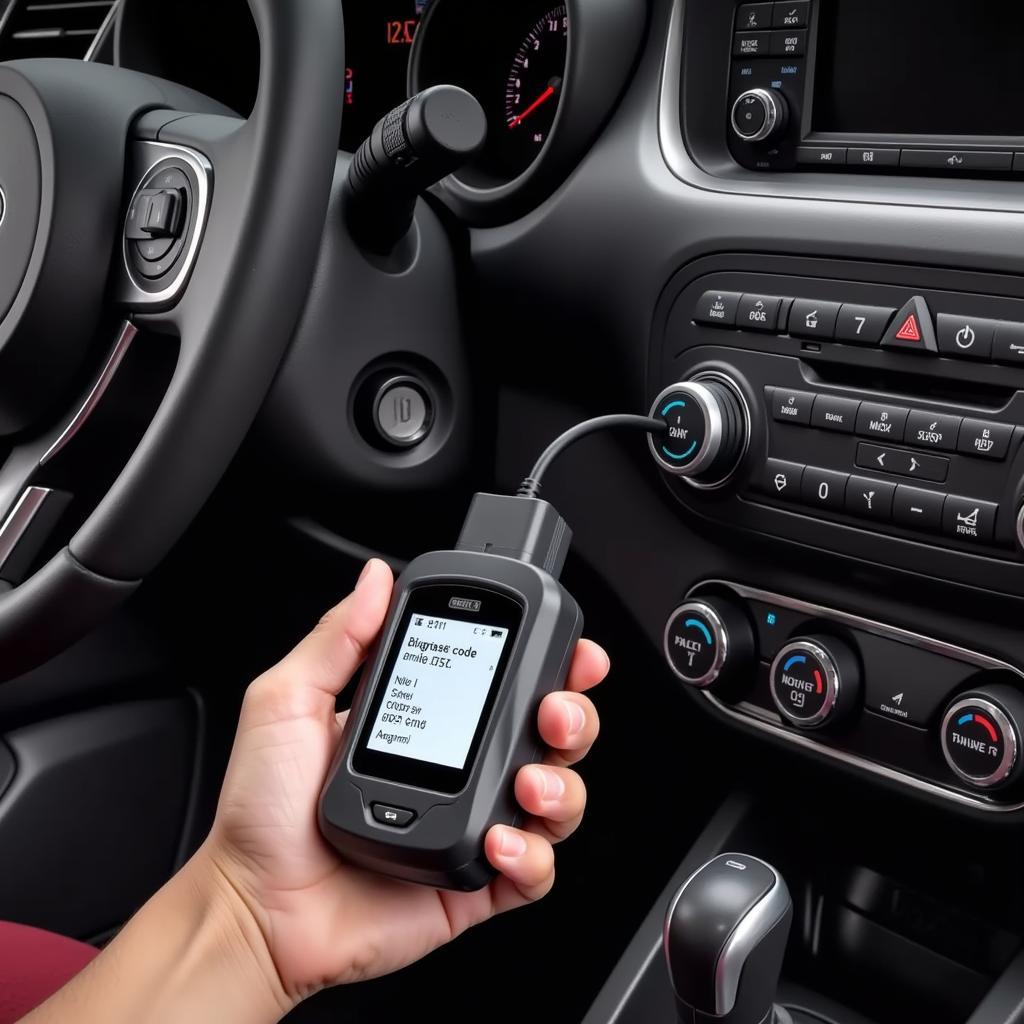Have you ever been driving down the road, enjoying a beautiful sunny day, when suddenly your car sputters and dies? It’s a frustrating experience, and one that can be quite frightening. You’re left stranded on the side of the road, wondering what went wrong and how to fix it.
This is where a scan tool comes in handy. It’s one of the most powerful tools available for diagnosing a stalling problem in your car. And while it might seem complicated, it’s actually a relatively straightforward process, especially if you’re working with an experienced mechanic.
Why Use a Scan Tool to Diagnose Stalling?
A scan tool can be a game-changer for pinpointing the root cause of your car’s stalling woes. By connecting to the vehicle’s onboard computer, it pulls valuable information like:
- Engine control module (ECM) data: This data reveals vital information about how the engine is running, including fuel pressure, air flow, spark timing, and more.
- Error codes: These codes are like messages from the ECM, indicating specific problems that need attention. For instance, a code related to the fuel system might suggest a faulty fuel pump or a clogged fuel filter.
- Live data: This allows you to see real-time information about how various components are performing, helping to identify any inconsistencies or abnormal readings.
Using a Scan Tool to Diagnose Stalling: A Step-by-Step Guide
- Connect the scan tool to your vehicle’s OBD-II port. This port is typically located under the dashboard, near the steering column.
- Turn the ignition key to the “ON” position. This will power up the vehicle’s electrical system and allow the scan tool to communicate with the ECM.
- Select the appropriate vehicle make and model. This is important for ensuring that the scan tool is compatible with your car’s system.
- Retrieve and review the diagnostic trouble codes (DTCs). These codes are usually displayed on the scan tool’s screen.
- Analyze the live data streams. This can provide additional insights into the problem, such as fuel pressure readings or engine RPM fluctuations.
- Use the scan tool’s built-in functions to test specific components. For example, you might be able to test the fuel pump or the spark plugs.
- Interpret the results and diagnose the problem.
Common Questions About Using a Scan Tool to Diagnose Stalling
How can I tell if the scan tool is reading the correct codes?
It’s essential to ensure the scan tool is compatible with your car model, as some models might require specialized tools.
What if there are no codes stored in the ECM?
If there are no codes, you can use the scan tool to monitor live data for any abnormalities, such as low fuel pressure or inconsistent engine speed.
Can I diagnose and fix the stalling problem myself?
While a scan tool can provide valuable insights, diagnosing and repairing a stalling problem can be complex. It’s recommended to consult a qualified mechanic for a thorough diagnosis and repair.
Case Study: Diagnosing a Stalling Problem in a 2021 Toyota Camry
Let’s say you’re driving a 2021 Toyota Camry in Atlanta, GA, and your car suddenly stalls at a busy intersection. You pull over to the side of the road and try to restart the engine, but it just won’t turn over.
This is a classic example of a situation where a scan tool can be immensely helpful. By connecting the scan tool, you discover an error code related to the fuel pump. This could indicate a malfunctioning fuel pump, a clogged fuel filter, or a problem with the fuel lines. By further investigating the fuel pump and testing the fuel pressure, you’ll be able to pinpoint the exact cause of the stalling problem and fix it accordingly.
Beyond Stalling: Using Scan Tools for Comprehensive Diagnostics
While diagnosing a stalling problem is a common use case, scan tools can also help you with other issues, such as:
- Engine performance problems: Poor acceleration, misfires, rough idling, and excessive smoke.
- Transmission issues: Shifting problems, slipping gears, and transmission overheating.
- ABS and SRS problems: Malfunctioning anti-lock brakes or airbag systems.
- Electrical problems: Faulty sensors, open circuits, and short circuits.
The Importance of Choosing the Right Scan Tool
Not all scan tools are created equal. Some are more specialized and require specific software or training to operate effectively. Here are some key factors to consider when choosing a scan tool:
- Compatibility with your vehicle: Ensure the scan tool is compatible with your specific make, model, and year of vehicle.
- Features and functionality: Look for a scan tool with features like live data, error code retrieval, and component testing capabilities.
- Ease of use: Choose a scan tool that is user-friendly and intuitive to operate.
Where to Buy a Scan Tool
You can find a wide variety of scan tools at various online retailers, auto parts stores, and even some automotive dealerships. Here are some trusted places to look:
- Amazon: Amazon offers a huge selection of scan tools, from basic to professional-grade models.
- AutoZone: AutoZone is a popular auto parts retailer that carries a variety of scan tools.
- Advance Auto Parts: Advance Auto Parts is another reputable source for automotive parts and scan tools.
Contact Us
If you’re looking for help with selecting or using a scan tool, or if you have any questions about diagnosing or repairing a stalling problem in your car, don’t hesitate to reach out to us. Our team of automotive experts is available 24/7 to assist you via Whatsapp at +84767531508.
Conclusion
Using a scan tool to diagnose stalling is a valuable skill for anyone who wants to understand their car better. While it’s not always a simple process, with the right tool and some basic knowledge, you can gain valuable insights into the problem and get your car back on the road.
As always, we encourage you to explore other articles on our website, like “What are the Best Scan Tools for European Cars?” or “How to Interpret Diagnostic Trouble Codes (DTCs).” Share your thoughts in the comments below, and let’s discuss your automotive experiences!


